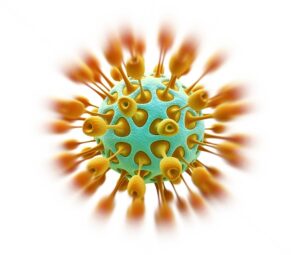New predictive criteria that can be used to identify which patients with COVID-19 are at risk of developing a cytokine storm, putting them at higher risk of developing severe or fatal reactions, provide the potential for early diagnosis and treatment of these patients.
Evidence from previous studies has suggested that well-established criteria to identify two forms of cytokine storm found in other epidemics and conditions—hemophagocytic lymphohistiocytosis (HLH) and macrophage activation syndrome (MAS)—aren’t applicable to COVID-19 patients. In addition, reports of significant diffuse inflammation and widespread tissue damage in COVID-19 patients and autopsies indicate the need to look at criteria beyond respiratory status to include markers of tissue damage and inflammation.
In a study recently published by researchers at the Lewis Katz School of Medicine at Temple University in Philadelphia, investigators hypothesized that criteria for inflammation and cell death would predict COVID-19-related cytokine storm associated with severe hyperimmune response and subsequent organ damage.
The study included two cohorts. The first cohort consisted of 513 patients with COVID-19 infection who were hospitalized at Temple University Hospital during the peak of the pandemic from March to May 2020. Based on laboratory results of the first seven days of hospitalization for these patients, investigators identified 12 laboratory parameters predictive of the development of cytokine storm. These parameters were grouped into three main clusters: 1) inflammation, 2) cell death, and 3) tissue damage and prerenal electrolyte imbalance. To determine the predictive value of each parameter, the investigators calculated the cut-off at which each parameter fit the criteria using a generic algorithm.
Validation of the criteria was demonstrated in a second cohort of 258 patients, which yielded a high specificity and sensitivity (0.85 and 0.80, respectively). According to lead author of the study Roberto Caricchio, MD, professor of medicine, and chief of the section of rheumatology, and director of the Temple Lupus Program at Temple University, more than 40% of the patients who developed the cytokine storm in their study fit the criteria at hospital admission, and the criteria fit all the patients by 10 days of hospitalization.
“These criteria allow a rapid diagnosis of this severe condition,” he said, adding that since the criteria are based on laboratory results accessible in most hospitals, they can be readily used in clinical practice for early diagnosis and treatment.
Dr. Caricchio listed some study limitations, such as the inclusion of patients of whom the majority had been treated with steroids, and the inclusion of patients from a single center with a specific racial/ethnic composition (e.g., 53% of patients were African-American and 23% were Hispanic). He emphasized the need for future validations by multiple centers and countries to resolve them.
